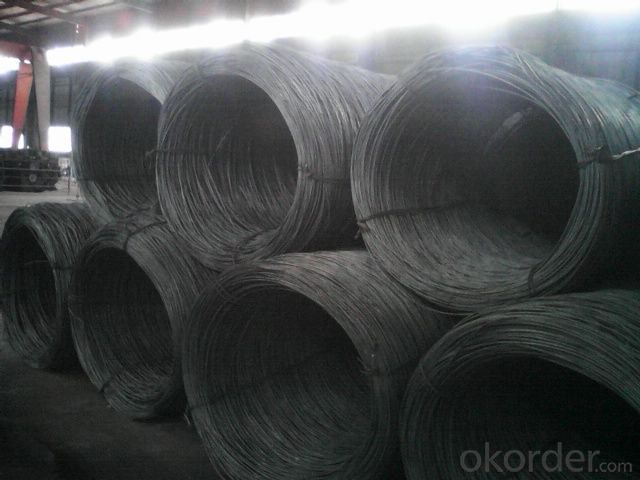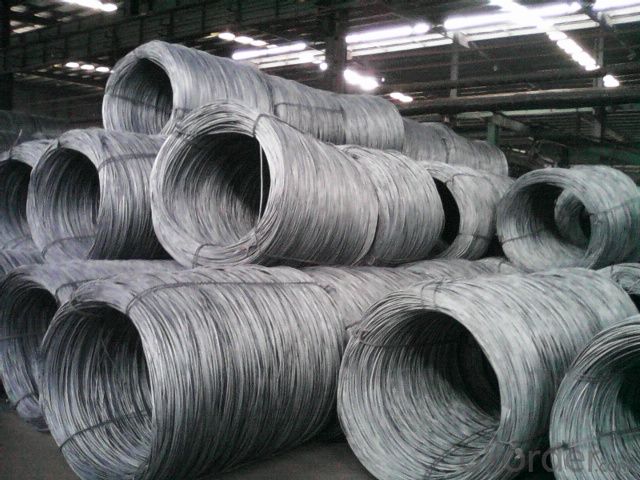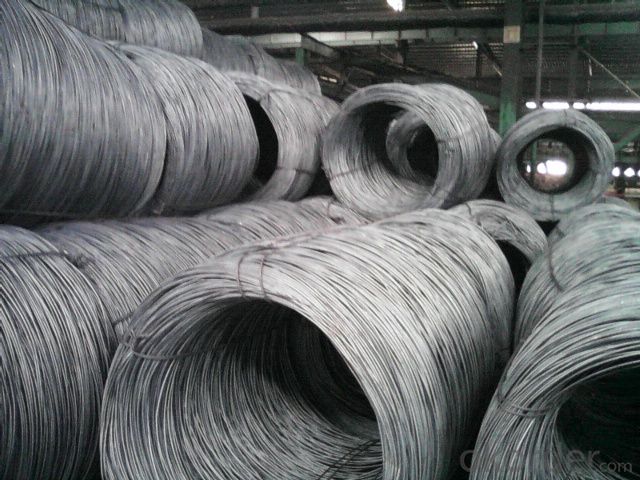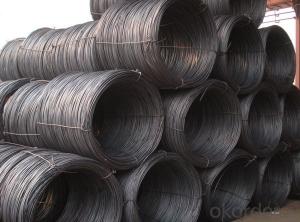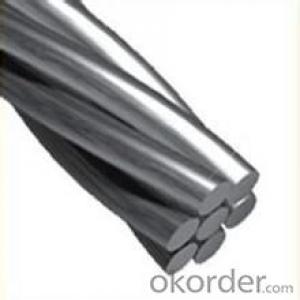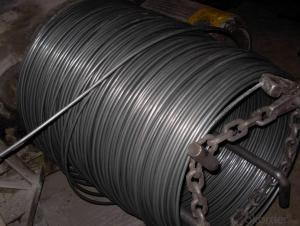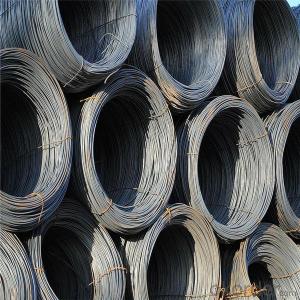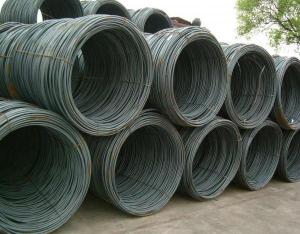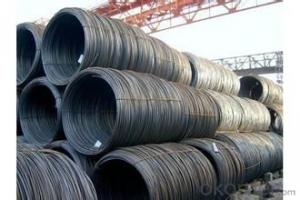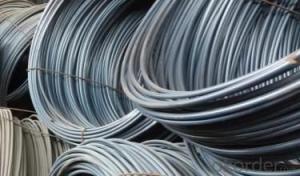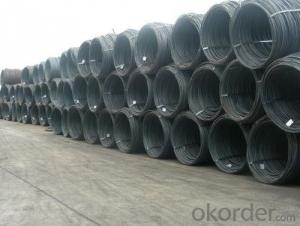Hot Rolled Steel Wire Rod AISI/ASTM/DIN/BS/GB/JIS
- Loading Port:
- Tianjin
- Payment Terms:
- TT OR LC
- Min Order Qty:
- 25 m.t.
- Supply Capability:
- 30000 m.t./month
OKorder Service Pledge
OKorder Financial Service
You Might Also Like
Specification
Product Description:
OKorder is offering Hot Rolled Steel Wire Rod AISI/ASTM/DIN/BS/GB/JIS at great prices with worldwide shipping. Our supplier is a world-class manufacturer of steel, with our products utilized the world over. OKorder annually supplies products to European, North American and Asian markets. We provide quotations within 24 hours of receiving an inquiry and guarantee competitive prices.
Product Applications:
Hot Rolled Steel Wire Rod AISI/ASTM/DIN/BS/GB/JIS are ideal for structural applications and are widely used in the construction of buildings and bridges, and the manufacturing, petrochemical, and transportation industries.
Product Advantages:
OKorder's Hot Rolled Steel Wire Rod AISI/ASTM/DIN/BS/GB/JIS are durable, strong, and resist corrosion.
Main Product Features:
· Premium quality
· Prompt delivery & seaworthy packing (30 days after receiving deposit)
· Corrosion resistance
· Can be recycled and reused
· Mill test certification
· Professional Service
· Competitive pricing
Product Specifications:
Steel Grade: Q195 Standard: ASTM, GB
Diameter: 5.5mm, 6.5mm, 7mm,8mm,9mm,10mm,12mm,14mm
6.5mm can be drawing into 2mm/8.0mm can be drawing into 3mm
Type: Drawn Wire in Coil, each coil weight about 2MT
Brand Name: N-RIVER Place of Origin: Hebei, China
Chemical Composition:
Please kindly find our chemistry of our material based on Q195 as below for your information
Trademark | Rank | Chemical composition (quality score) % | |||||
C | Si | Mn | S | P | |||
| ≤ |
| ≤ | ≤ | |||
Q195 |
| 0.06-0.12 | 0.30 | 0.25 | 0.050 | 0.045 | |
Trademark | Rank | Pulling Test | |||||
Bend PointΔs/Mpa | Tensile Strength | Elongation Ratioδ5% | |||||
Thickness (Diameter) /MM | Thickness (Diameter) /MM | ||||||
≤16 | 16-40 | ≤16 | 16-40 | ||||
≥ | ≥ | ||||||
Q195 |
| 195 | 185 | 315-390 | 33 | 32 | |
Packaging & Delivery of Wire Rod SAE1008B:
Packaging Detail: products are packed in coil and then shipped by container or bulk vessel
Each coil weight: 2-3MT
Delivery Detail: within 45 days after received deposit or LC.
Label: to be specified by customer, generally, each bundle has 1-2 labels
Trade terms: CFR, CIF
FAQ:
Q1: Why buy Materials & Equipment from OKorder.com?
A1: All products offered byOKorder.com are carefully selected from China's most reliable manufacturing enterprises. Through its ISO certifications, OKorder.com adheres to the highest standards and a commitment to supply chain safety and customer satisfaction.
Q2: How do we guarantee the quality of our products?
A2: We have established an advanced quality management system which conducts strict quality tests at every step, from raw materials to the final product. At the same time, we provide extensive follow-up service assurances as required.
Q3: How soon can we receive the product after purchase?
A3: Within three days of placing an order, we will begin production. The specific shipping date is dependent upon international and government factors, but is typically 7 to 10 workdays.
Q4: What makes stainless steel stainless?
A4: Stainless steel must contain at least 10.5 % chromium. It is this element that reacts with the oxygen in the air to form a complex chrome-oxide surface layer that is invisible but strong enough to prevent further oxygen from "staining" (rusting) the surface. Higher levels of chromium and the addition of other alloying elements such as nickel and molybdenum enhance this surface layer and improve the corrosion resistance of the stainless material.
Q5: Can stainless steel rust?
A5: Stainless does not "rust" as you think of regular steel rusting with a red oxide on the surface that flakes off. If you see red rust it is probably due to some iron particles that have contaminated the surface of the stainless steel and it is these iron particles that are rusting. Look at the source of the rusting and see if you can remove it from the surface.
Images:

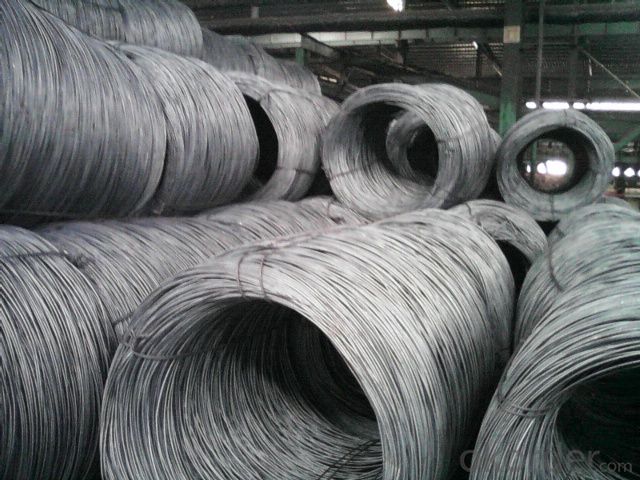
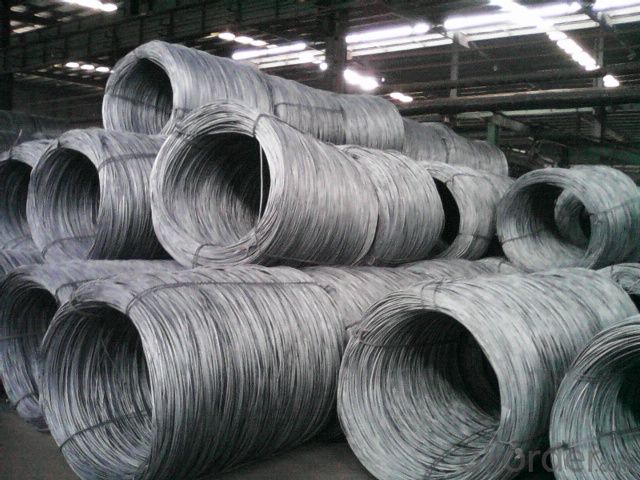
- Q: How is the dimensional accuracy of steel wire rod measured?
- The dimensional accuracy of steel wire rod is typically measured using various techniques and tools to ensure that the dimensions of the rod meet the required specifications. Some commonly used methods to measure the dimensional accuracy of steel wire rod include: 1. Calipers: Calipers are used to measure the diameter of the steel wire rod. They can be either manual or digital, and they provide accurate readings by tightly gripping the rod and measuring its diameter. 2. Micrometers: Micrometers are precise measuring tools used to measure the diameter of the steel wire rod. They provide highly accurate readings by using a calibrated screw mechanism to measure the dimensions. 3. Optical measurement systems: Optical measurement systems use advanced technology, such as lasers or cameras, to measure the dimensions of the steel wire rod. These systems provide accurate and quick measurements by capturing multiple data points and analyzing them to determine the dimensional accuracy. 4. Ultrasonic measurement: Ultrasonic measurement techniques involve emitting ultrasonic waves into the steel wire rod and analyzing the reflected waves to determine its dimensions. This method is especially useful for measuring the thickness and cross-sectional dimensions of the rod. 5. Automated measurement systems: Automated measurement systems utilize specialized equipment and software to measure the dimensional accuracy of steel wire rods. These systems can provide accurate and repeatable measurements by employing robotics, sensors, and image processing algorithms. It is important to note that the specific measurement technique used may vary depending on the required dimensions, tolerances, and the capabilities of the manufacturer or testing facility.
- Q: How are steel wire rods used in the production of screws and bolts for mechanical assemblies?
- Screws and bolts for mechanical assemblies require steel wire rods as a crucial component. These wire rods are made from high-quality steel, which provides the necessary strength and durability for the fasteners. To begin the production process, the wire rods are heated and then passed through a series of rollers to reduce their diameter. This process, called wire drawing, ensures that the wire rods achieve the desired thickness and smoothness required for manufacturing screws and bolts. The wire rods are then cut into smaller lengths, which serve as the foundation for individual fasteners. Following this, the wire rods undergo a cold heading process. In this process, the wire rod is placed into a die and pressure is applied to shape it into the desired screw or bolt head. Cold heading not only forms the head but also creates the necessary thread on the shank of the fastener. This threading is essential as it allows the screws and bolts to securely fasten different components together. After the cold heading process, additional treatments may be applied to enhance the performance of the screws and bolts. These treatments can include heat treatment to further strengthen the steel, plating or coating for corrosion resistance, or specific coatings for improved lubrication during assembly. Once the screws and bolts are fully formed and treated, they are packaged and prepared for distribution to various industries that rely on mechanical assemblies. These fasteners play a crucial role in ensuring the stability and functionality of machinery, vehicles, and structures by securely holding different components together. In conclusion, steel wire rods undergo processes like wire drawing and cold heading to produce screws and bolts. These fasteners, with their threaded shanks, are then used in mechanical assemblies to provide a secure and reliable means of joining components together.
- Q: How is steel wire rod used in the production of wire shelves?
- Steel wire rod is used in the production of wire shelves as it serves as the raw material for making the wire mesh that forms the structure of the shelves. The wire rod is first processed and shaped into the desired wire thickness and diameter, and then it is welded or woven together to create the mesh panels that make up the shelves. This sturdy and durable material ensures the strength and stability of wire shelves, allowing them to hold and display various items efficiently.
- Q: What are the common production processes for dubnium-coated steel wire rod?
- The common production processes for dubnium-coated steel wire rod typically involve several steps. First, the steel wire rod is cleaned and prepared to remove any impurities. Then, a layer of dubnium coating is applied to the surface of the wire rod using methods such as electroplating or physical vapor deposition. This coating process helps enhance the wire rod's corrosion resistance, durability, and other desired properties. Finally, the dubnium-coated steel wire rod undergoes quality control inspections to ensure it meets the required standards before being made available for various applications.
- Q: What are the advantages of using steel wire rod in aerospace applications?
- Steel wire rod offers several advantages in aerospace applications. Firstly, it provides excellent strength and durability, making it ideal for withstanding the extreme conditions encountered during flight. This strength allows for the construction of lighter and more fuel-efficient aircraft. Additionally, steel wire rod has a high resistance to corrosion, which is crucial in aerospace applications where exposure to moisture and harsh environments is common. Furthermore, steel wire rod has exceptional flexibility, allowing it to be easily shaped and formed to meet the specific requirements of aircraft components. Lastly, steel wire rod is readily available and cost-effective, making it a practical choice for the aerospace industry. Overall, the use of steel wire rod in aerospace applications offers enhanced safety, performance, and cost-efficiency.
- Q: How is the dimensional accuracy of steel wire rod measured?
- The dimensional accuracy of steel wire rod is typically measured by using precision instruments such as calipers or micrometers to assess the diameter, roundness, and straightness of the rod.
- Q: How is steel wire rod used in the production of nails?
- Steel wire rod is used in the production of nails as it serves as the primary raw material. The wire rod is first drawn down to the desired diameter and then cut into appropriate lengths. These lengths are then pointed at one end and headed at the other, resulting in the formation of nails. The strength and durability of the steel wire rod provide the necessary characteristics for nails to effectively penetrate different materials, making it an essential component in their production.
- Q: What are the disadvantages of using steel wire rod in manufacturing?
- Using steel wire rods in manufacturing has several drawbacks: 1. Corrosion is a major issue with steel wire rods, especially when exposed to moisture or chemicals. This can significantly reduce the durability and lifespan of manufactured products. 2. Weight is another concern as steel wire rods are relatively heavy compared to alternatives like aluminum or carbon fiber. This can result in a more labor-intensive manufacturing process and increased transportation costs. 3. Limited flexibility is a drawback of steel wire rods, restricting design possibilities and functionality in industries where flexibility is crucial, such as automotive or aerospace. 4. Cost is a significant disadvantage of steel wire rods, particularly when demand for steel is high, leading to increased prices. The manufacturing process for steel wire rods can also involve multiple steps, adding to production costs. 5. Environmental impact is a drawback of producing steel wire rods, as it involves the extraction of iron ore, resulting in deforestation, habitat destruction, and pollution. Additionally, steel manufacturing requires a substantial amount of energy, contributing to greenhouse gas emissions. 6. Maintenance is necessary to prevent corrosion in steel wire rods, which adds to overall costs and time required for product maintenance. This includes applying protective coatings and implementing proper storage methods. 7. Steel wire rods have poor electrical conductivity compared to materials like copper or aluminum. This limits their usability in industries or applications where electrical conductivity is essential, such as electronics or electrical wiring. Overall, while steel wire rods offer advantages like strength and rigidity in manufacturing, they also come with significant drawbacks that need to be considered when choosing materials for manufacturing processes.
- Q: What are the common industry developments for steel wire rod?
- Some common industry developments for steel wire rod include advancements in production processes to improve efficiency and quality, increasing use of automation and technology for manufacturing, development of high-strength and specialty wire rods for specific applications, growing demand for wire rods in construction, automotive, and infrastructure sectors, and efforts towards sustainability and eco-friendly production methods.
- Q: How is the quality of steel wire rod ensured during manufacturing?
- The quality of steel wire rod is ensured during manufacturing through various processes and measures. These include rigorous inspection of raw materials, adherence to strict production standards, and continuous monitoring of the manufacturing process. Additionally, advanced technologies such as spectroscopy and non-destructive testing are used to detect any defects or impurities in the steel wire rod. Furthermore, regular quality control checks are conducted to ensure that the product meets the required specifications and performance standards.
Send your message to us
Hot Rolled Steel Wire Rod AISI/ASTM/DIN/BS/GB/JIS
- Loading Port:
- Tianjin
- Payment Terms:
- TT OR LC
- Min Order Qty:
- 25 m.t.
- Supply Capability:
- 30000 m.t./month
OKorder Service Pledge
OKorder Financial Service
Similar products
Hot products
Hot Searches
Related keywords



